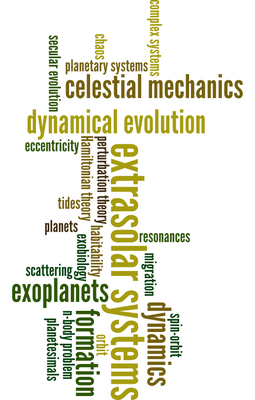Team
 Anne-Sophie Libert
Anne-Sophie Libert
As an FNRS (Belgian National Fund for Scientific Research) Research Fellow, I got my PhD thesis in applied mathematics at the University of Namur in 2007. After a postdoctoral stay at the University of Thessaloniki in 2008, I received a 4-year F.R.S.-FNRS Postdoctoral Research Fellowship at UNamur, during which I spent one year at IMCCE (Institut de Mécanique Céleste et de Calcul des Ephémérides, Lille, 2012). In 2013, I was consecutively researcher for the 'Dysco' Interuniversity Attraction Pole (IAP) and the F.R.S.-FNRS 'ExtraOrDynHa' (Extrasolar Orbital Dynamics and Habitability) Research Project (PDR) at naXys Research Center.
Assistant Professor at the Department of Mathematics of the University of Namur since 2014 and Professor since 2018, I am also director of the Namur Institute for Complex Systems (naXys) since 2017 and board member of the Technological Platform for High Performance Computing (PTCI) since 2015. My main research topic is the formation and dynamical evolution of extrasolar systems, with a particular focus on the question of life in these systems.
Post-Doctoral REsearchers
Jean Teyssandier
 I am an FNRS research fellow since October 2019. Previously I was a postdoc at Cornell University and Cambridge University, and did my PhD at the Institut d'Astrophysique de Paris. My research focuses on planetary dynamics, and the physics of planet-disc interactions. I worked on the formation of hot Jupiters through high-eccentricity migration driven either by the Lidov-Kozai mechanism or by secular chaos. I also studied the migration of planets in discs, with a focus on forming pairs of resonant planets, with possibly inclined orbits. Finally I worked on the dynamics of eccentric accretion discs, with applications to planet-disc interactions.
I am an FNRS research fellow since October 2019. Previously I was a postdoc at Cornell University and Cambridge University, and did my PhD at the Institut d'Astrophysique de Paris. My research focuses on planetary dynamics, and the physics of planet-disc interactions. I worked on the formation of hot Jupiters through high-eccentricity migration driven either by the Lidov-Kozai mechanism or by secular chaos. I also studied the migration of planets in discs, with a focus on forming pairs of resonant planets, with possibly inclined orbits. Finally I worked on the dynamics of eccentric accretion discs, with applications to planet-disc interactions.
More information and a list of my publications can be found here:
https://jeanteyssandier.github.io/
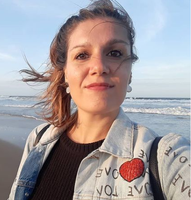 Carolina Charalambous
Carolina Charalambous
I am a postdoctoral fellow since January 2021 supported by the F.R.S.-FNRS DYNAMITE project. I finished my Ph.D. in April 2020 in Celestial Mechanics and Planetary Sciences at the Instituto de Astronomía Teórica y Experimental from CONICET and Observatorio Astronómico de Córdoba, from Córdoba National University (Argentina). My Ph.D. Thesis is titled “Dynamical analysis of resonant multi-planetary systems” and was supervised by Dr. Cristián Beaugé. I am particularly interested in theoretical and computational projects related to evolution and dynamics of the exoplanetary population, both during the gaseous and post-gas phases, modelling planet-disk interactions.
PhD Students
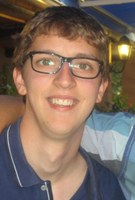
Arnaud Roisin
I studied applied mathematics at the university of Namur in the department of mathematics. During my first year of master, I spent one semester at the university of Cardiff (Wales) as an erasmus student. During my second year of master, I went for an internship at Aristotle university of Thessaloniki (Greece). In Greece, I was introduced to formation theory by Prof. K. Tsiganis. During my master thesis, I got familiar with symplectic integrators and binary star systems.
Since 2017, I am a PhD student at the department of mathematics of the university of Namur. My work is supported by the Belgian National Fund for Scientific Research (F.R.S.-FNRS). I work on formation in binary star systems. In particular, I focus on the late stage of the gas phase, where both the interactions between the planets and their natal protoplanetary disc play an important role in sculpting the planetary system. More precisely, I follow, by extensive n-body simulations, the evolution of fully formed three giant planets migrating in the disc (Type II migration). A particular attention is also given on inclined binary companions and the repercussion of a possible Kozai resonance between the planets and the binary companion.
Former REsearchers
Manon Bataille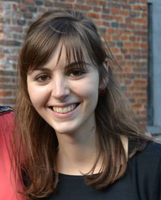
I studied applied mathematics in the Department of Mathematics of the University of Namur. My master's thesis was a first step into the world of exoplanets, for which I spent 3 months at the University of Aveiro (Portugal).
In 2014, I was hired as PhD student and teaching assistant at UNamur. I was in charge of the exercises for courses such as “Symplectic geometry” and “Celestial mechanics and resonances". My thesis project was about tidal effects in extrasolar systems (including binary stars systems). I aimed to find an analytical, simplified model explaining the migration of Hot Jupiters around the observed 3-days orbital period. I wanted to understand the characteristics of these migrating planets in order to determine the mechanism which triggers the migration and then stops it, especially around 3 days. This work was done in collaboration with Alexandre Correia (University of Aveiro, Portugal).

Mara Volpi
I studied Mathematics at the University of Rome "Tor Vergata": during the years of formation I developed a strong interest for Applied Mathematics, expecially for Celestial Mechanics. Therefore, for my Master thesis I chose to investigate the possible correlation between a stellar jet acting on a protoplanetary disk and the orbits of the planets formed in the disk itself.
My PhD project concerned the study of the stability of extrasolar planetary systems and was supported by a FRIA grant from the Belgian National Fund for Scientific Research (F.R.S-FNRS) for the period 2015-2019. In particular, I focused on systems detected with the radial velocity method: the observations give information about most of the orbital parameters of the planets, but nothing can be said about the mutual inclination of the orbits. The aim of the project was to restrain the observations, providing for the inclinations a range of possible values that guarantee the stability of the system.
Kyriaki I. Antoniadou
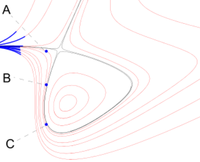
I obtained my Ph.D. in Celestial Mechanics with the grade "Excellent" (2014), I hold a Master in Computational Physics with Honours (2009) and I received a Degree in Physics with specialization field in Computational Physics (2007) at Aristotle University of Thessaloniki, Greece.
During the period 2016-2019, I was a postdoctoral researcher, here, at the University of Namur and my main research focus aimed to perform dynamical studies, which are essential to determine whether a planet can remain stable over a long time span, and to identify the boundaries of stability domains. The quest of “exo-Earths”, which unites many scientific fields, has become intriguing, still, it suffers from the limitations of the detection methods.
Within ExtraOrDynHa project funded by F.R.S.-FNRS, I intended to address the question of the sustainability of habitable terrestrial exoplanets under the effect of a giant planet in planar or spatial, resonant or non-resonant configurations. The computation of families of symmetric or asymmetric, planar or spatial periodic orbits in a suitable rotating frame of reference acts as a diagnostic tool, which can help ascertain information regarding the phase space in planets’ dynamical vicinity. Maps of dynamical stability can assist the visualization of their neighbourhood via the computation of chaotic indicators.

Sotiris Sotiriadis
I graduated from Aristotle University of Thessaloniki in Greece with a Bachelor's degree in Physics and a Master degree in Computational Physics. For my Master's thesis, I developed a GPU-based computational code that performs orbital evolution of the planetary N-body problem.
During the period 2013-2017, I was a PhD student in the ExtraOrDynHa project (funded by the F.R.S.-FNRS). My research topics are related to the formation and evolution of planetary systems. In collaboration with B. Bitsch (Lund Observatory, Sweden) and A. Crida (Nice Observatory, France), we focus on the impact of gas-planet interactions to the final architecture of systems that consist only of gas giants, as they emerge form the protoplanetary disc phase. In order to investigate the concept of Habitability, in collaboration with S. Raymond (Bordeaux Observatory, France), we study the influence of the gravitational interactions of giant planets to the terrestrial planet formation process. We are interested in the possibility of forming habitable Earth-like planets on stable eccentric orbits away from the midplane.
Emeline Bolmont, Assistant Professor at University of Geneva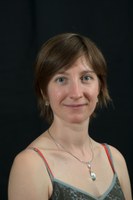
In 2013, I got my PhD thesis on the "Evolution and habitability of planetary systems around low-mass stars and brown dwarfs" at the Observatory of Bordeaux (France) with S. Raymond and F. Selsis. During the period 2014-2016, I was a post-doctoral researcher in the ExtraOrDynHa project (funded by the F.R.S.-FNRS), mainly working on dynamical and tidal evolution of extra-solar planet systems.
I am particularly interested in the links between the tidal evolution of these systems and the habitability of their planets. Planets around low mass stars and brown dwarfs are very easy to detect (by transit for example) and are known to host much more terrestrial planets than Sun-like stars. Planets in the Habitable Zone of these objects are the only planets of the Habitable Zone for which we can now determine the mass and soon characterize the atmosphere. As these planets are close to their host star, they are influenced by tides: their orbit and rotation will evolve with time thus impacting their climate. I am studying these connections and one of the goals is to prepare the arrival of missions such as JWST which will be able to probe the atmosphere of these planets.
If you want to know more about me: www.emelinebolmont.com

